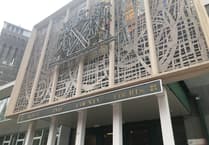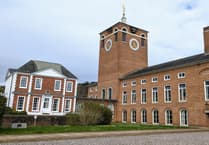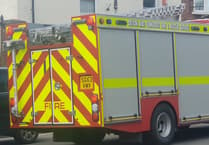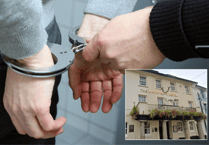Prior to the introduction of 'artillery spotting' by aircraft, the first experiments were carried out at Okehampton Battle Camp ,using hot air balloons for operations in the Boer War.
Mike Wreford said: 'It is believed that spotting by aircraft was used used in 1919 but we cannot identify where there was a landing strip for this purpose. However, in June 1924, as a result of a survey by the Royal Air Force, a suitable strip was identified on Dartmoor at Halstock Down, which was ideal, due to its proximity to the firing ranges.
'However, they ran into the same weather difficulties as that with the hot air balloons as the violent storms proved so unfortunate for the aircraft experiments that the whole outfit had to pack their tents and go back to base.
'The greatest difficulty was the erection of hangars on the windy, exposed slopes of Halstock Down, and in the high winds it was found impossible. On one day the airmen had got on very well only to find that the next morning that all they had erected had been blown down and the canvas blown to pieces!
'One plane was kept on the open moor for two nights but as there was fear that the high winds would damage the aircraft, it was removed. However, some flights were carried out in conjunction with the artillery and it was reported that "the skill and daring of the airmen were wonderful and flying at great height they managed their craft with great dexterity".
'To improve the conditions a landing stage was built at Halstock under the direction of the Royal Engineers. This experimental work was considered so important that the site was inspected by General Sir Webb Gillman, who was director of artillery.'
But it appeared that the general conditions of the site were not favourable and there seemed to be no record of it being used in future years.
Mike continued: Another strip wa— midway between Okehampton and Holsworthy. This was used in 1925 to 1926 but the landing conditions were difficult and needed airmen of the highest standard to land the planes safely, and as there had been a crash it was decided to look for a more suitable landing strip, to avoid further casualties.
'Another factor, which is difficult to believe today, is that the distance — eight miles from the ranges — was an encumberance.'
As a result of an exhaustive search by the Air Council, the proposal was made to acquire the Folly Gate site of some 48 acres.?After a great deal of work, the airfield opened in the summer of 1928, which proved a success both in peacetime and war.
During the war it fell to the Okehampton/Folly Gate section of the Home Guard to provide security at the airfield.
For more see Mike and Hilary Wreford's book Okehampton Collection 2 available through local bookstores.



